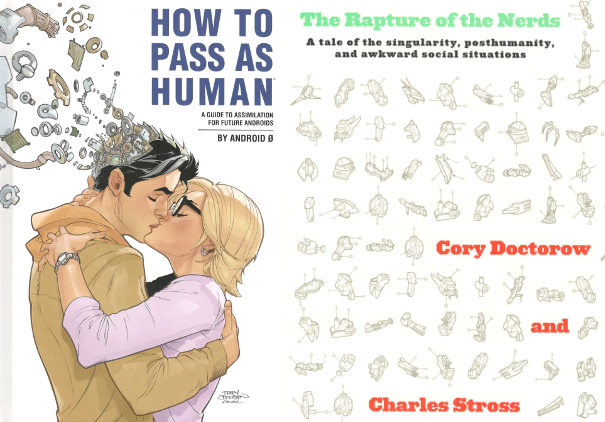2015 — 2 October: Friday
I suspect I finally reached some sort of domestic (or, perhaps, emotional) tipping point yesterday. Well, I assume it was me who finally decluttered and massively tidied-up the front half of my living room. Did I mention all the CaseLogic folders that house all the CDs are now neatly tucked out of the way — but still "get-at-able" — under the bench seating in the dining room? Or that the piano stool "bench" seat that was a constant threat to my knees is now across the room guarding access to the plasma gas fire while also providing a better stand for the laptop PC?
I've finally decided to do any further "Kuro screen" viewing from the right-hand side of the sofa precisely where Christa used to sit. This places me in the A/V "sweet spot" — whereas for the last eight years I've continued to sit in the off-axis armchair, which is, I'm prepared to admit, crazy given the investment in A/V technology, and given that I'm the only human occupant of Technology Towers for 99.9% of the time.
This unaccustomed burst of domesticity has left me wondering:
- Can I free up enough room in Junior's "space" upstairs to re-connect1 my Epson inkjet printer up there?
- Can I tackle the equally-cluttered back half of the living room before this urge fades?
I shall definitely need more tea, and some breakfast, before I decide. It's possible to be too hasty.
Meanwhile...
... I've given up on the wireless mouse yet again. It's now relegated to laptop PC duty as that device is already Bluetooth aware (though there's an as-yet unsolved, but quite interesting, chicken-and-egg philosophical conundrum involving how to manoeuvre the mouse pointer over the Bluetooth icon on the System Tray to set it up in the absence of a working mouse pointer). Happily, the mouse works fine in simple 'wireless' mode. And the rodent is now within easy range of its wireless USB dongle at all times, so there should be fewer missing mouse clicks, surely?
The only real exercise the laptop PC gets is regular patching of its Linux Mint 17.2 Cinnamon system, keeping a backup working PC in case of further BlackBeast Mk III shenanigans. Which I anticipate daily, just as with any PC running under any OS hereabouts. (Even RISC OS threw the occasional hissy fit. Windows 8.1 was the least trouble so far, until my system SSD went castors-up. And please don't get me started on OS X.)
But where would...
... I ever find enough free wall space to handle this "cool" technology?
Against the far wall of the lab's library stood a 10-foot wooden bookshelf. It was stuffed with manuals on the history of computers and programming and interfaces, novels and countless non-fiction books... [he] pointed a small green laser at one of the books. The spine — the physical spine — lit up and above the bookshelf the book itself exploded onto an empty swath of wall. The entirety of its contents, laid out page by page by some hidden projector.
Since it's a Friday...
... I've been in Soton for a spot of the retail therapy I often needed after five days cooped up in IBM Hursley. Retirement has altered my habits, not least because of the way I tend to prop up Amazon. Soton had seven pretty reliable bookshops. Nowadays it's down to about three, depending on what scale you measure them, though probably not quite at this scale:
...and it is at this scale [the "Planck length"] that we might expect to see some effects of quantum gravity. However, before embarking on a "do-it-yourself" kitchen sink experiment, the prudent reader should note that the sizes of an atom and nucleus are approximately 10-10m and 10-15m, respectively. So we are contemplating a distance that is twenty orders of magnitude smaller than the diameter of a proton; not perhaps the easiest regime to explore, even with the aid of the implements in a modern kitchen....
I used this quotation, and the accompanying equation...

... under the not very original heading "What goes up, must come down...." to illustrate a Ron Cobb cartoon that shows a Valley Sky Diver falling upwards and looking somewhat bemused.
The discovery that the strong force gets weaker at small distances, while electromagnetism, which gets united with the weak force, gets stronger at small distances, led theorists in the 1970s to propose that at sufficiently small scales, perhaps 15 orders of magnitude smaller than the size of a proton, all three forces (strong, weak, and electromagnetic) get unified together as a single force in what has become known as a Grand Unified Theory.
And there's me thinking it was turtles, all the way down.
I am in awe...
... of a politician's ability to order his guvmint, and I quote, to set about...
Establishing, over the next 15 years, a viable path forward for future HPC systems even after the limits of current semiconductor technology are reached (the "post-Moore's Law era").
I hadn't realised it was that simple to bypass the laws of physics. Still, in 15 years from now, I've no doubt Deep Thought2 will fit inside a matchbox, if not a tie-pin.
I'm hoping...
... these two titles will make a nicely-matched pair:

With some soothing music as accompaniment:

The lady tickling the ivories (Impromptus) is doing so magnificently. She's called Mitsuko Uchida. A minor miracle for a mere £2-99. Though the fact that it's a 2009 CD may explain both the bargain price and why none of the three URLs printed on the artwork is still 'live'.